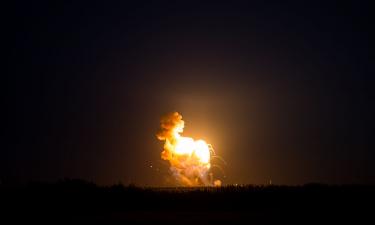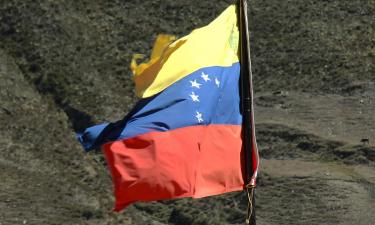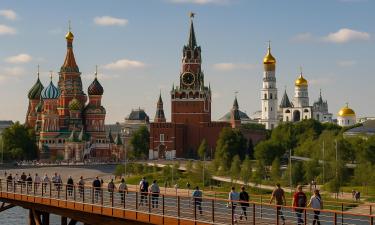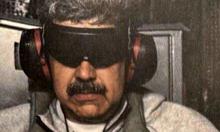Fifth Column Among Hostages Caused the Gas Attack Decision. Part Two
The use of gas during the storming of the sieged theatre in Moscow: opinions, estimations, and suggestions
A soldier from an elite special troops unit who participated several times in hostage rescue missions said in an interview to Russia’s newspaper Moskovsky Komsomolets: “The use of any novelties in hostage release operations of this kind is out of the question. All talk that the FSB overdid the gas dosage sounds strange at least. I say this for two reasons. First, the special gas had been developed in the KGB laboratories many years ago. The chemicals developed there are still considered the best in the world. Second, the decision to use gas for such a large-scale operation is usually made on the top level, after consultations with specialists, and respected experts put their signatures under the decision to use any chemicals in special operations. Believe me, it’s a very important problem that can’t be spoken about casually.”
The soldier adds: “We are not kamikazes. The gas concentration was only as much as necessary. Everything was done in accordance with the standard norms; we even could have raised the gas concentration to make perfectly sure that the terrorists would have been completely neutralized. Special troops all over the world follow the same instructions in hostage release operations: they must cause as least harm as possible, and better to say they mustn’t cause harm at all. The gas used by the Alpha special group has been used several times already; it is used by the Russian army. Foreign specialists from Delta and GSG-9 also have analogous gases. Intelligence services of the world desire to obtain the chemistry of such special gases.”
GaZeTa published the opinion of an intensive therapy doctor, director of a narcological clinic Irina Voyevodskaya. The doctor maked her conclusions based on the symptoms of poisoning of the hostages. “Judging by some features, the gas belongs to a definite group of substances that are harmless for people under regular conditions. The gas likely contained valium or seduxen, which are really harmless substances. The gas has an effect in closed rooms. It has rather a soporific and not hallucinogenic effect. It influences only the part of the brain that is responsible for breathing. When people leave the room where the gas is spread, the effect considerably reduces.
Trust me, if the special services used a combat paralytic agent, the number of victims would be much more. Ambulance doctors and rescuers were warned what kind of gas was used in the special operation. When the hostages were taken out of the theatre, they were injected with an antidote to relieve the intoxication and neutralize the effect of the gas spread in the theatre.
However, organizers of the storming missed one detail when they decided to use the gas; they neglected the fact that the gas was harmless for healthy people who eat and drink enough. However, in this case, the hostages were kept in a closed room without food and water for many hours. Doctors call this condition homeostasis, when the mineral and water balance a person is broken. The bodies of the hostages were dehydrated. As we see, this caused an unpredictable effect, including a lethal outcome. We didn’t expect that it might happen at all.”
However, Doctor Aaron Zilberman from the Mount Sina Medical Biological College in Boston says that “Russian servicemen had no other choice.”
Another foreign specialist, General Carlo Gian from Italy’s Supreme Center for Defense Investigations, also gave a high estimation to the hostage release operation in Moscow. He said in an interview to Stampa, “it was a question of death of several hostages for the sake of saving the rest. From a military point of view, an operation of this kind is a success if the number of victims doesn’t exceed 50%.” The Italian general is sure that Russian special services had no other way-out.
It is perfectly clear that information concerning the gas used in the operation is classified; it’s now impossible to find out what kind of gas was used.
According to recent reports, the chief intensive therapy doctor from the presidential administration’s medical center, Viktor Fominykh, said at a briefing that no combat poison gases had been used in the rescue operation.
In Fominykh’s words, “the gas used in the special operation was a substance with a general narcotic action, which is usually used in surgical operations.” That is why the doctors and rescuers had all necessary medicines to “restore the normal functions of the human body without identifying why the normal functions had stopped.”
A detailed analysis of the hostage release operation in Moscow and a summing up of the results are yet to be made. Russian Deputy Minister for Internal Affairs Vladimir Vasilyev says that the actions of the operative headquarters will be considered by the Prosecutor’s Office; he stated that the operative headquarters were completely responsible for the operation.
According to the latest information, the number of the hostage victims in Moscow has reached 117 people already.
Sergey Stefanov PRAVDA.Ru
Read the First Part of the article
Translated by Maria Gousseva
Read the original in Russian: https://www.pravda.ru/accidents/10179-moscow/
Related links:
Subscribe to Pravda.Ru Telegram channel, Facebook, RSS!





